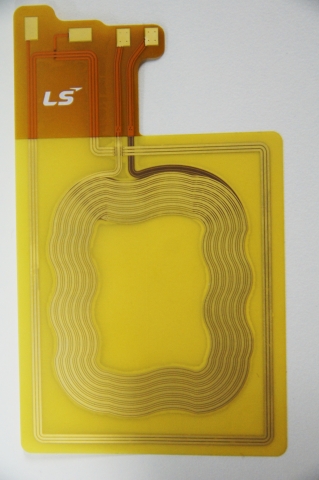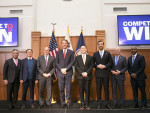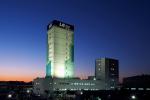LS Cable & System developed the thinnest wireless charging module in the world
- 0.32mm thick, 40% thinner than before, and has a high charging efficiency
- A highly functional charging module with the wireless charging and near field communication function
- Leading the rapidly growing wireless charging market
As this product has the near field communication (NFC) function as well as the magnetic induction wireless charging function, it will make it possible to use the wireless charging function and the wireless data communication function while maintaining the thickness of the current smart phones. Considering that the existing charging module was 0.5mm thick, the thickness has been reduced by a whopping 40%. This product is in conformity with the Qi certification of the Wireless Power Consortium (WPC), currently leading the field of wireless charging, and is compatible with the products of 138 companies around the world.
To develop the thinnest wireless charging module, LS Cable & System developed a film-type coil in place of the winding coil, and introduced the pattern partitioning technology and improved the two problems, i.e. heat and declining charging efficiency, which have been the obstacles to the thinning of the charging module. The wireless charging module of LS Cable & System takes about two hours to go from full discharge to full charge, and has the same efficiency as the wired charger (for 2,000mAh). Also, LS Cable & System also succeeded in keeping the temperature rise due to the AC resistance during charging below 5℃. LS Cable & System has already applied for a patent for this technology.
A charging cover had to be separately manufactured for existing wireless charging modules, but this product will be installed in the rear cover of the cell phone where the NFC antenna is located, and takes charge of cell phone charging and near field communication. Accordingly, manufacturers can use existing molds without having to make additional parts and give the wireless charging function to the cell phones (wireless charging pad is necessary). Also, LS Cable & System began to develop a product for IT devices like tablets and notebooks that require large power transmission, and is developing products that can respond to various international standards other than the Wireless Power Consortium like the magnetic resonant method required by A4WP, which was made by Qualcomm and Samsung Electronics, the Power Matters Alliance (PMA), in which Proctor and Gamble (P&G) participates, and the Consumer Electronics Association (CEA) in which BMW takes part.
“As smart home appliances are proliferated in the future, wireless charging will become part of our lives,” said Mr. Hyeong-Won Kim, director in charge of the device business division. “LS Cable & System was the first in the world to introduce wireless charging in 2007. We are planning to capitalize on our technical know-how to introduce a greater variety of wireless charging technologies to the global market.
LS Cable & System finished development of the magnetic resonant wireless transmission system in 2012, and introduced its demonstration model for the first time in Korea. LS Cable & System succeeded in transmitting electric power wirelessly to the TV and LED stand from a distance of 2m. Also, in 2011, LS Cable & System introduced the magnetic induction wireless charger for smart phones, “Chaver” and they are very popular in the market.
According to the Korea Electronics Association, the domestic wireless charger market is expected to grow more than 20 times from 50,000-100,000 last year to 1 million-2 million this year. Also, the HIS Supply statistics forecasts that the global wireless charging market will grow from $880 million (KRW95 million) in 2011 to $23.7 billion (about KRW25 trillion) in 2015. In addition, Eugene Investment & Securities expects that about 8.2 million wireless chargers will be sold in the global wireless charger market this year, amounting to $130 million, up 43.9% in terms of units sold and up 57.8% in terms of amounts over last year, and the market will be invigorated.
Glossary
Magnetic induction (MI), Magnetic resonant (MR)
Magnetic induction lets electricity flow through electromagnetic induction, and the magnetic field generated at the primary coil of the charging pad is induced to the secondary coil of the rechargeable battery and electric current is supplied. The ‘Qi’ certification is the standard wireless charging method certified by the Wireless Power Consortium, and it is the wireless charging method most widely used in the world now. About 120 products of 138 corporations around the world have adopted this method.
Magnetic resonant wireless charging induces a certain magnetic field to the transmitting coil, and makes it resonate it with the receiving coil. In other words, as two tuning forks resonate with each other and make a sound, the wavelengths are adjusted so that two copper coils resonate in the magnetic field and electric power is transmitted.
※ Global non-contact charging market (Source: HIS Supply 2010, Unit $1 million)
Classification 2011 2012 2013 2014 2015
Amount 885.8 3,338.2 9,720.7 16,017.2 23,714.7
Website: http://www.lscns.co.kr
Contact
Yoon-Seok Kim
+82-2-2189-9592
Send Email
This news is a press release provided by LS Cable & System.





